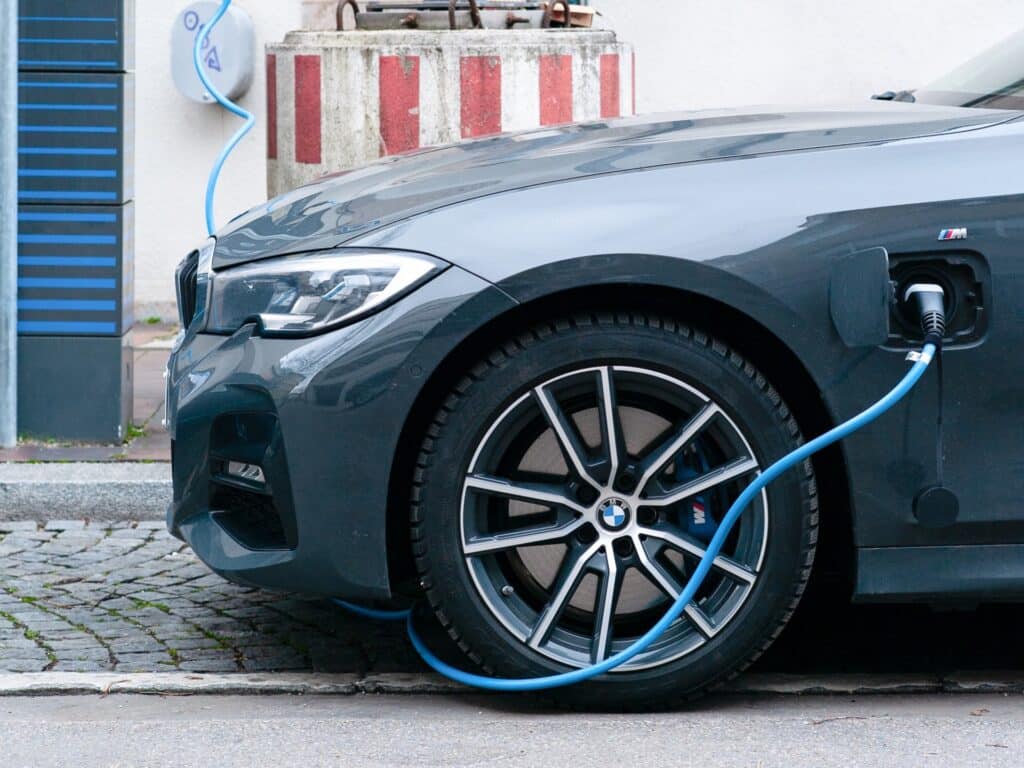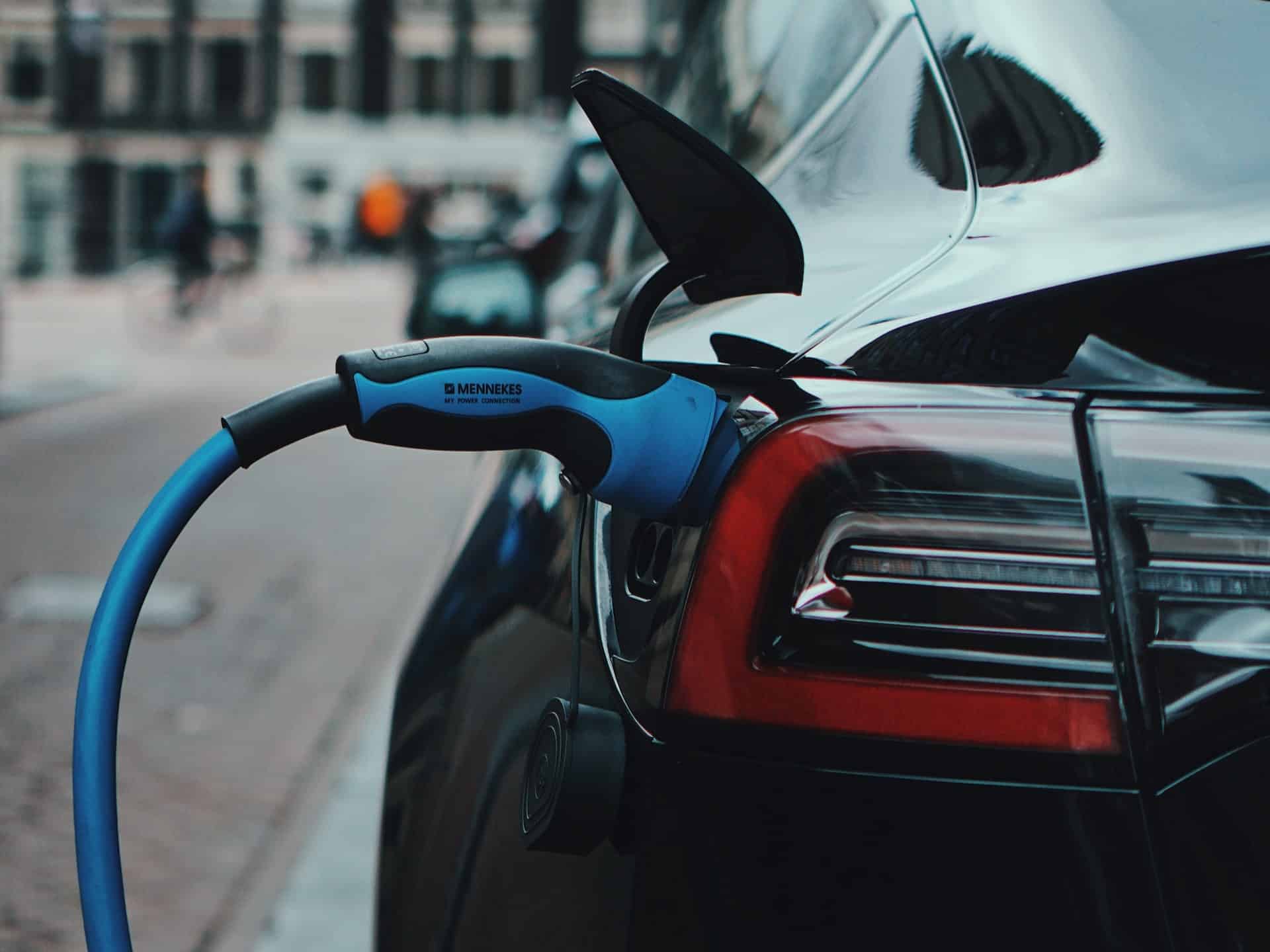The extended car warranty industry is big business in the U.S., valued at $20.5 billion in 2022. And according to many experts, the industry is expected to continue to grow in the coming years. However, much of the business model is based on covering components of internal combustion engine (ICE) vehicles. Given that fact, the rapid growth of electric vehicles (EVs) as a share of the auto market in recent years could disrupt the warranty industry’s well-established business model.
Since EVs lack many of the mechanical components covered by traditional extended warranty contracts and have many components that aren’t, warranty companies may have to redesign their product offerings and business strategy. Some companies have started to offer EV-specific warranty products. However, many of the biggest names in the industry have yet to adjust – suggesting that the industry may not be ready for the EV transition.
EVs Are Taking Up More of the Road
Since they first hit the mainstream American market nearly 15 years ago, EVs have steadily taken an increasing share of the automotive market. During that time, an increase in the number of EV models available, tax credits for buying EVs, and other factors have helped turn EVs from a rare find on the road to a common sight on highways and in parking lots across the country.
After accounting for just 0.17% of new car sales in 2011, 4.6% of all new car sales were EVs in 2021 – a 2,605.9% growth in just a decade, according to data from the U.S. Bureau of Labor Statistics (BLS). Much of that increase has come much more recently, however, as EV market share growth has accelerated in the last five years. It wasn’t until 2018 that the stock of EVs surpassed one million vehicles. However, it took only three years after that for that number to exceed two million vehicles.
A Significant Number of EVs Are Aging Out of Factory Warranty Coverage
Even though millions more EVs have hit the road in recent years, they have yet to present a significant opportunity for extended warranty providers, as many of those are still covered under factory warranties. Most factory warranties for EVs range from five years to 10 years of coverage. In addition, the federal government has mandated that automakers protect the main battery – one of the most important and expensive components on an EV – for 10 years or 100,000 miles.
This means that very few, if any, of the EVs sold since 2018 have needed additional coverage. But that will soon change. In addition to the vehicles that have already aged out of their factory coverage, millions more EVs will no longer be covered under their factory warranty in the next few years. Many EV owners, therefore, may soon be investigating their options for extended warranty coverage. Extended warranties appeal to many drivers because they can make regular monthly payments or pay one lump sum in advance in order to cover the potentially-devastating expense of fixing mechanical issues.
The influx of EVs that will soon be without warranty coverage presents an opportunity for vehicle service contract providers to capitalize on a burgeoning market. However, an increase in EV market share also means a decrease in the market share of ICE-powered vehicles. This could present a challenge for established providers who may see the number of ICE-powered cars – the lifeblood of the industry – start to dwindle.
Most Warranty Products Are Built Around Mechanical Engines
Gasoline-powered engines and their long list of components have been the driving force behind the multi-billion dollar extended warranty industry. And while cars have seen tremendous technological advancements over the past several decades, the primary components that power them have remained relatively consistent.
But EVs, by their nature, lack many of the components covered under extended car warranties. At higher levels of coverage, in which a warranty covers things like climate control and electrical systems, there is some overlap between ICE-powered vehicle parts and EV components. However, when it comes to base-level powertrain plans, very little of the covered components in a warranty contract exist in an EV, rendering those plans effectively useless for EV owners.
It’s not just a difference in the type of components, either. EVs have far fewer drivetrain components overall than gasoline-powered engines. On average, conventional drivetrains have around 200 parts. By comparison, the average EV drivetrain has around 20.

Some Providers Are Early Adopters of EV Coverage
The growth of EVs as a share of the auto market presents several challenges for extended warranty providers. Due to differences in configurations, coverage plans need to be developed from scratch. And whereas there are decades-worth of experience and data around what can go wrong with an ICE-powered vehicle and how likely those things are to go wrong, EVs are still new enough that there is still little information for providers to base their coverage plans and rates on.
However, while some companies see these challenges as obstacles to offering EV warranties, others see them as an opportunity. One of those companies is Xcelerate Auto. In 2019, the company began offering XCare, an extended warranty designed specifically for EVs.
In an interview with Automoblog, Xcelerate COO Milad Davoodi talked about some of the challenges of figuring out coverage plans for EVs.
“Understanding the technology and its iterations are key,” said Davoodi. “EVs are new, but they are changing at a pace far faster than traditional ICE-powered vehicles. While historically we saw major changes in ICE vehicles every seven to 10 years due to a new vehicle generation, EVs are changed throughout the year, and the changes often have no relation to the model year.”
Davoodi said that in addition to differences in components and how often the vehicles change, EVs simply don’t behave like ICE-powered vehicles when it comes to aging. Gasoline-powered cars tend to age in a fairly linear fashion, with parts wearing out as they get older and get more miles on them. But Davoodi said that EVs don’t age and deteriorate in the same way.
“When it comes to batteries, a more reliable battery would be one that has a healthy amount of miles, as opposed to one that was not driven much,” he said. “These high-voltage batteries are designed to go through charge cycles. An older EV with fewer miles might see more issues than one that has been driven 12,000 to 15,000 miles per year. As more data proves this to be true, there is a greater shift in pricing risk into the cost calculations.”
Davoodi pointed out that there are even significant differences between how EVs and ICE-powered vehicles are serviced, and therefore how warranty claims are administered.
“When talking about the direct-to-consumer EV manufacturers like Tesla, Rivian, and Lucid, which are the vast majority of EVs on the road, they have totally different service models than the traditional ICE world,” explained Davoodi. “A warranty company or administrator needs to know how to work around these direct-to-consumer service models, or else it leads to a very terrible customer experience with claims.”
Warranty Companies Don’t Need to Upend Their Businesses for EVs Just Yet
While the EV transition presents a looming challenge for extended warranty providers, the need to respond to that challenge is still not urgent. The rapid increase in EV market share has certainly been dramatic. But even with that increase, ICE-powered vehicles still represent the overwhelming majority of vehicles being sold. And EVs make up an even less-significant percentage of vehicles that currently need additional coverage.
Nonetheless, Xcelerate and other companies that have begun to explore the EV extended warranty market see the current conditions as an opportunity to get in on the ground floor of a market that will almost certainly see tremendous growth in the not-too-distant future. Davoodi said that offering EV warranties while the market is relatively small has provided an opportunity to learn how the EV warranty business model may look as compared to the established extended warranty model.
“I see the warranty market going more towards a direct-to-customer model, similar to the direction new vehicle purchasing has gone,” said Davoodi. “The traditional way of negotiating and having non-transparent terms and pricing is not ideal for customers. Customers want transparency and want to know that what they are buying is trustworthy.”
He said that warranty providers will benefit from seeing EVs as an entirely different item that requires an entirely different kind of coverage, rather than simply trying to adapt their current models to EVs.
“Those who will succeed are those who will not look at the vehicles the way they have historically looked at them as mechanical devices, but rather as key technological components that have a vastly different lifespan,” said Davoodi.
But even more important, he suggested, is understanding the differences in how EV owners think about their cars compared to ICE-powered vehicles. Owners of EVs, he said, have a different relationship to their vehicles and will value a warranty provider who understands that.
“Even though EVs have now been around for over a decade, many people who are now jumping into it, although not early adopters, still have the same outlook on getting an EV as those who did 10 years ago,” said Davoodi. “They view it as a type of lifestyle change. They want to be able to work with people who understand the ins and outs of this new technology, and its abilities.”
For now, warranty providers may not need to rush to make changes to be competitive in a market in which EV owners make up a substantial portion of potential customers. However, if the sudden and steep increase of EV market share is any indication, a dramatic shift in focus – to include warranty products tailored to EVs – is almost certainly imminent.


